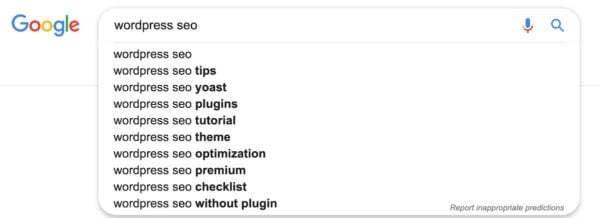What’s the difference between your brand and your keywords? Are you using both effectively? Of course, you want to be found for your brand name. So your brand is one of your keywords. It shouldn’t be your only keyword though, nor should you have lots of keyphrases but no brand. There should be a keyword strategy behind the keyphrases you pick, and your brand can play a role in this. Let’s explore the relationship between branding and keyword strategy!
Your branding and your keyphrases
But what is a brand keyword? Your brand keyword is the keyword people use to search for your company. The term branding stems from the literal act of branding cattle with a hot brand. You “mark your ownership” by branding a cow. In marketing, you can “own” a product group too by putting your brand on it.
Branding your products
Our brand name is Yoast. It’s not WordPress SEO, local SEO, or site structure. Those are keywords. Some years ago, we turned all our plugin names into branded names, instead of generic names. For instance, our WordPress SEO plugin became Yoast SEO for WordPress.
These are deliberate decisions, not happenstance. In the past, choosing generic product names or even generic keyword domains would’ve gotten you quick and easy rankings in the search engines. But, even if that would still work, the question you have to ask yourself is: If I do this, will people remember my brand? Because brand recognition is crucial for a long-term marketing strategy.
If you brand your products well, you can even make people aware of your brand right when they’re searching. For instance, when people search for WordPress SEO in Google, this is the suggest box they’ll see:

You’ll understand that seeing “yoast’ in this list, strengthens our position in a way that could never happen if our product had a purely generic name.
Branding your homepage
There’s one page that’s by far the most important in terms of branding: the homepage. Your homepage has one task, and one task only, from an SEO perspective: to rank for your brand. We can think of no meaningful website where this should be different. A long time ago already, Michiel wrote about Homepage SEO, telling people not to try and rank their homepage for a specific keyword.
What about your domain?
Because of our idea that you should have one brand and several (hundreds) keywords, we’re not big fans of keyword domains, such as productname.com, at Yoast. By using a (very specific) keyword domain, you bind your company’s past, present, and future to this one single keyword. What if you want to extend your portfolio or explore other topics? And with the abundance of top-level domains (TLDs) available, you’ll have a very hard time buying all of the TLDs with the same keyword to keep out the competition.
No single website, or worse, company should rely on a single keyword for its traffic. You need a more solid base. You need to execute keyword research and determine a keyword strategy!
Keyword strategy
We often talk about keyword research at Yoast, but we mention keyword strategy less. Nevertheless, it’s equally important. Keyword strategy is the step you take after you’ve created this long, extensive list of keywords you’d like to rank for. Your keyword strategy should make clear which keyword groups you should focus on. Which keywords of that long list should you tackle first? And how should you tackle those keywords?
To decide this, you have to take many factors into consideration. We can roughly divide these factors into four groups:
- Your audience: What are they looking for and how can you meet those needs? Not only the search terms they use (that should be a result of your keyword research) but also the form of the content you offer is important: do they need a video or a step-by-step guide? What is their search intent? Content design is a great method to tackle this.
- Your brand: What does your brand stand for? What values does it represent? Why would people want your products, information or whatever you offer? What’s the main message of your business? If you know this, it will be easier to prioritize your content: create what’s closest to your core values and business first.
- Search engines and analytical data: What’s your current position? Do you already have some pages that rank pretty well? If so, which type of content is that? Looking at this kind of data will help you find out what already works for you, so you know which content is worth the effort of creating.
- The competition: Who’s the competition? What do they do? Is there a way to differentiate yourself from the competition? If everyone does the same, you might want to find a way to stand out from the crowd. And, are you on the same level, in terms of rankings? Analyze what the competition does. If you have to compete with the big boys, a long-tail keyword strategy might be your best shot.
If you map out the factors above, you’ll get a clearer view of which groups of keywords or phrases are feasible to rank for and what kind of content will likely bring you success. So combine these findings with your keyword research and, Voila, you’ll have your keyword strategy!
Looking for more details on creating a keyword strategy? Check out “What is a keyword strategy” by Edwin.
But, how many keywords should I target?
While we can’t answer that question directly and equally for every organization and website, we can say a couple of things: 1, 5 or 10 keywords: that’s always too little. Broaden your horizon a bit and/or dive deeper into the long tail.
1,000+ keywords: if it’s just you or 2 of you, this is probably more than you can chew off. It’s not hard to gather 1,000 keywords though, so if you’ve got the time, the people and the inspiration, it usually does pay off to write a lot of meaningful content.
Do make sure that all those keywords relate to your products or services and make sure that you’re structuring your site well around it. We always tell people to think of their site as a pyramid. Your brand is at the very top, below that is your cornerstone content for your “head: keywords, the keywords you care about the most, below those are dozens – if not hundreds or thousands – of pages, strengthening your site’s structure.
So, even if you’re a reasonably small business, you’ll probably end up with a couple of hundred keywords. But you don’t have to have pages for all of these immediately. Prioritize with the above factors in mind!
If you do have trouble coming up with more than a few keywords, try some of the keyword research tools Marieke wrote about. Or give our keyword research training a shot!
Your keyword strategy lives and breathes
As you’ve hopefully understood: your branding and keyword strategy are intertwined. And, a final note: your keyword strategy should change every once in a while, it should adapt, grow with you. Now go, and create a keyword strategy. Or stay and comment with your remarks and questions!

